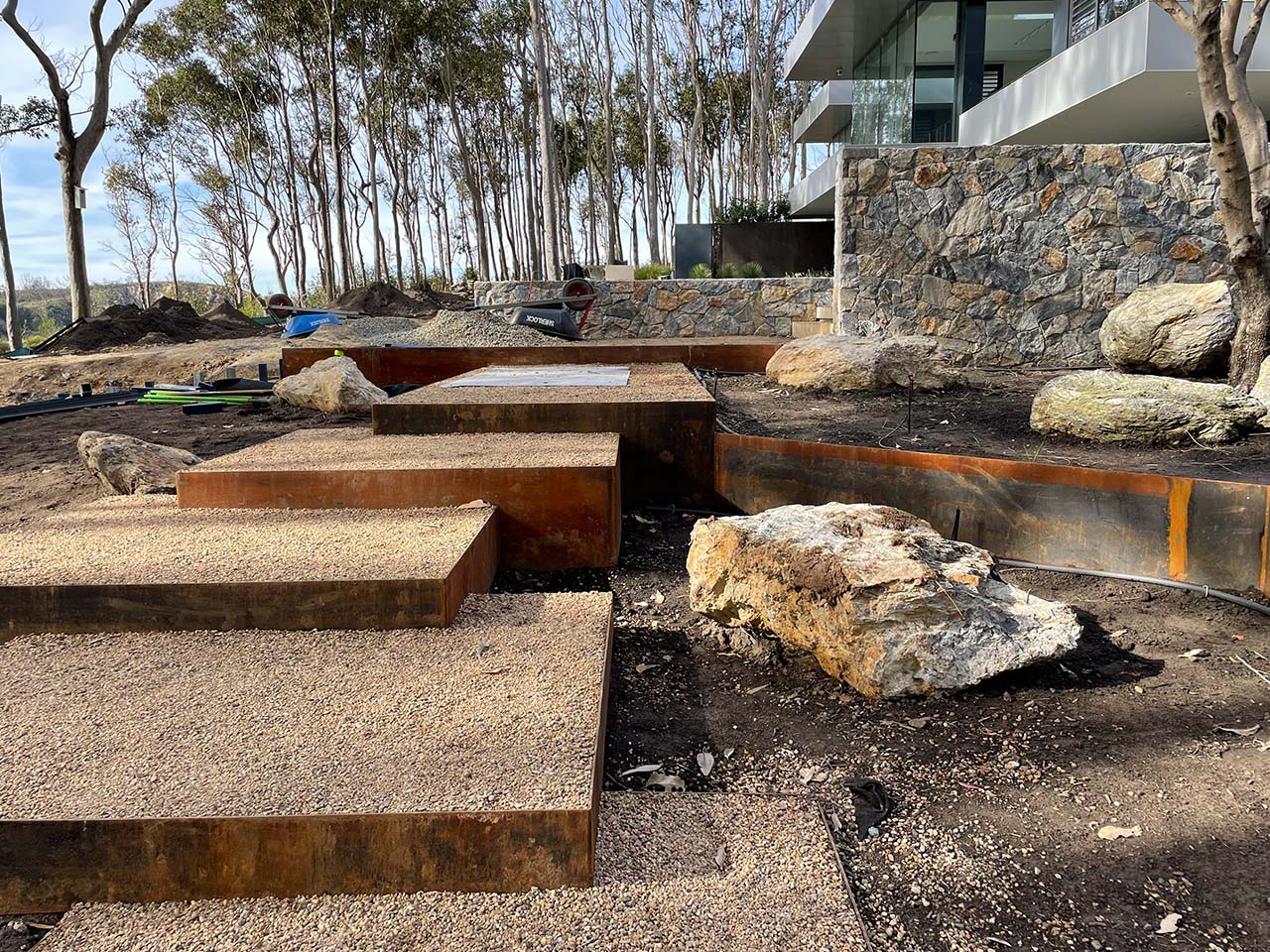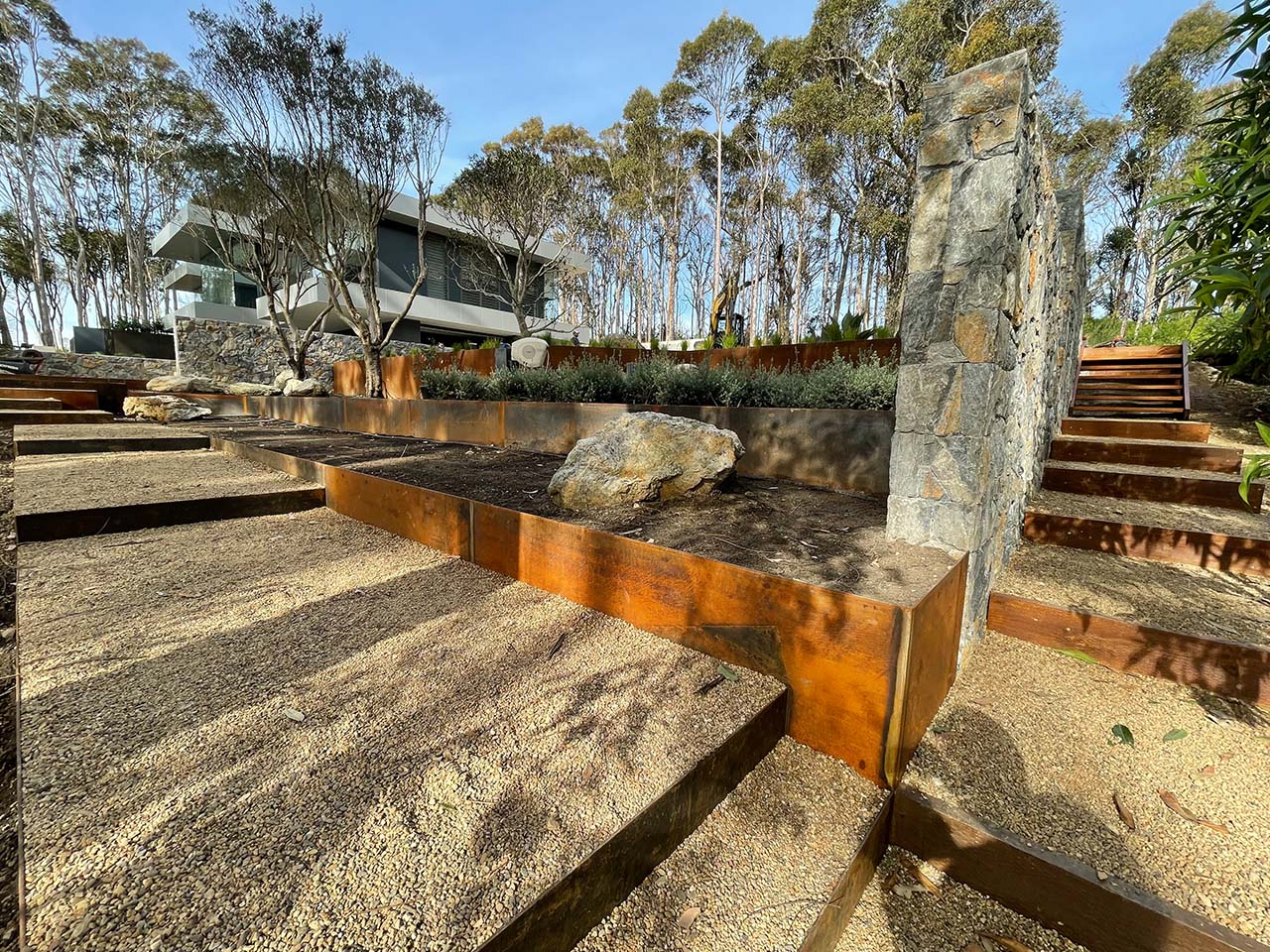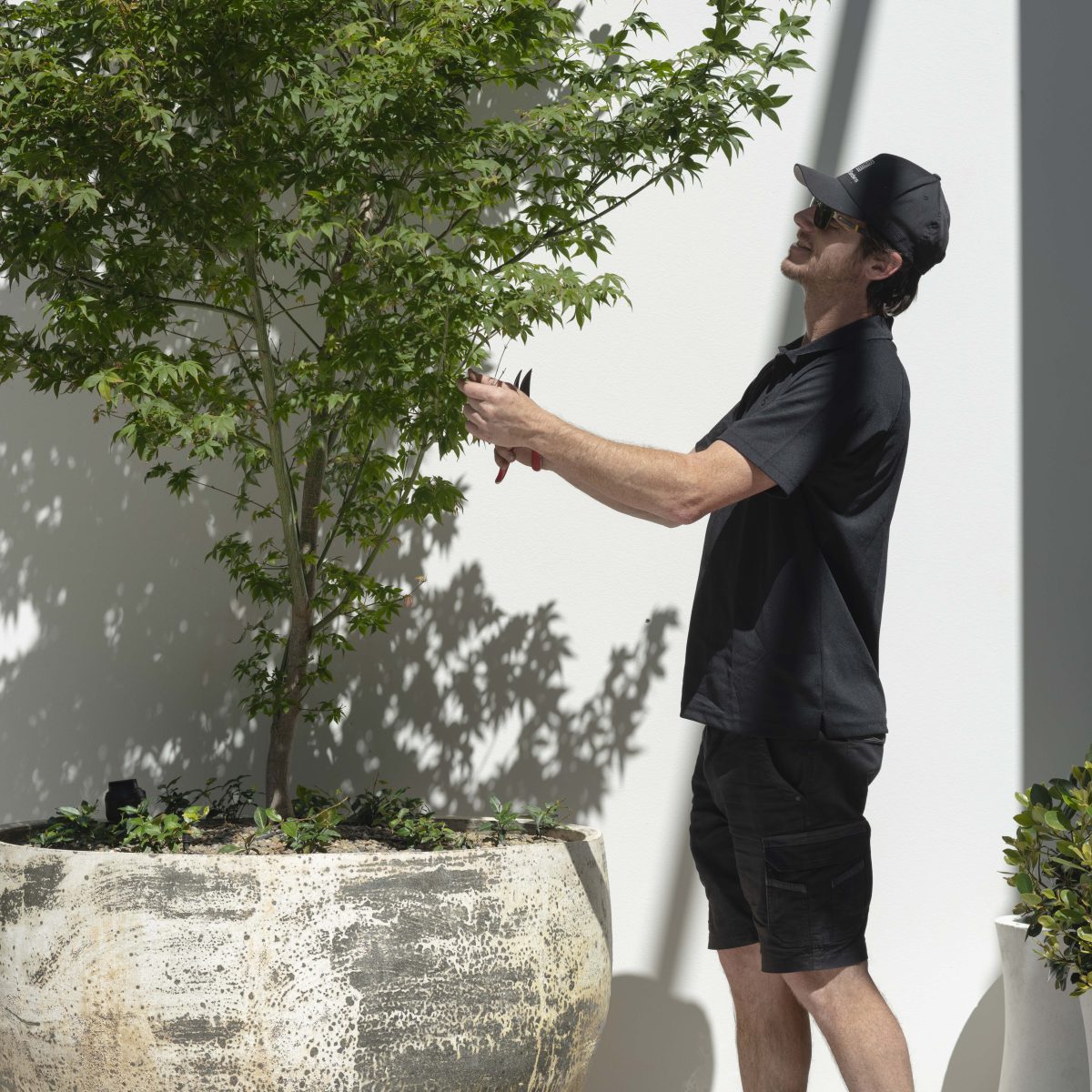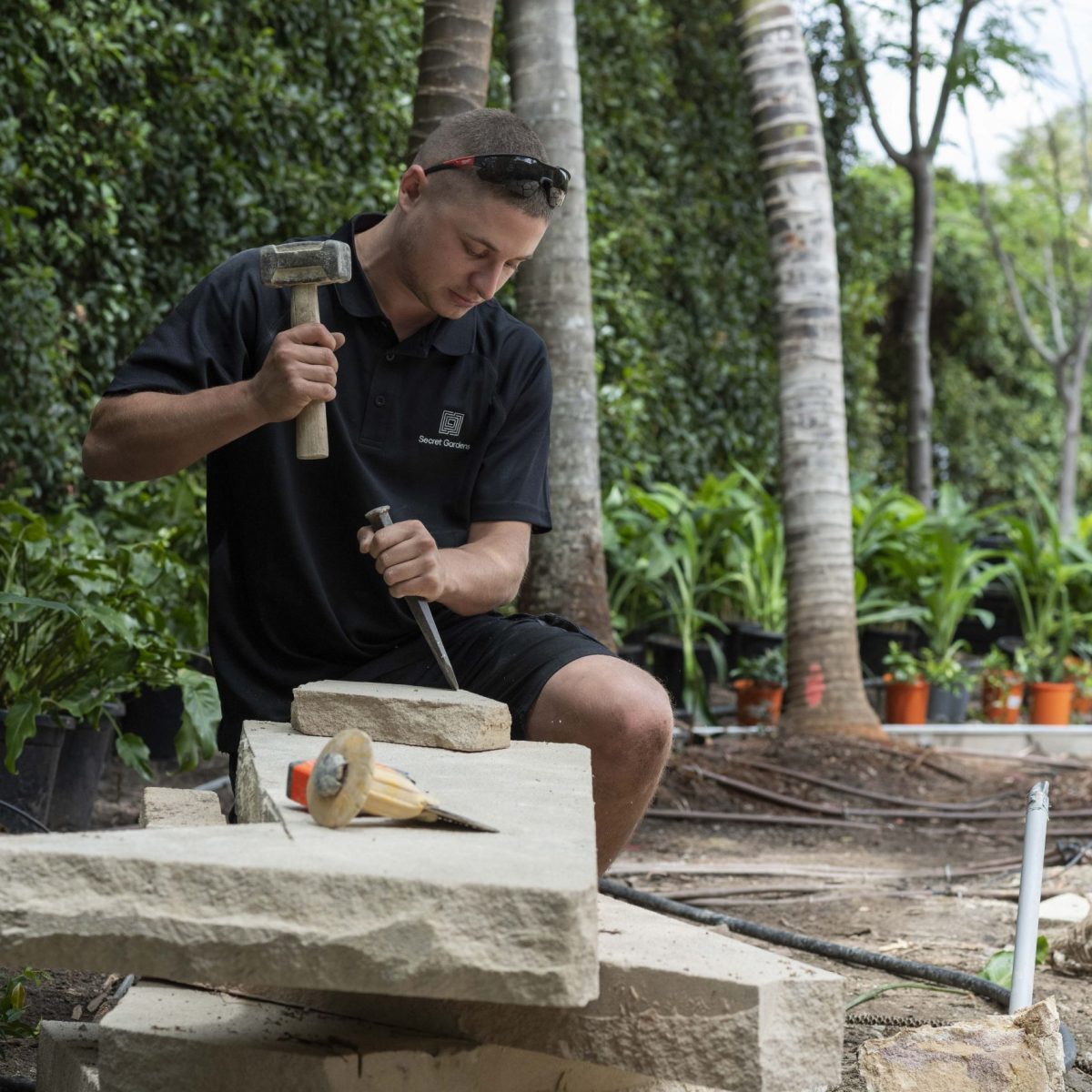While most focus on its strength and durability, steel, particularly Corten steel, is also a beautiful and versatile material in landscaping. For the uninitiated, COR-TEN® or Corten steel is a weathering steel which oxidises to turns orange and then red before stabilising, with increased resistance to atmospheric corrosion compared to other steels. Its rust-like, weathered appearance coupled with its strength and versatility has made Corten a versatile, beautiful material in landscape design, says Secret Gardens Creative Director, Matt Cantwell.
“It’s often used for areas that are difficult to access for maintenance down the track because the beauty of Corten is that you don’t have to do anything to it”
“From a maintenance perspective, it is quite strong and it’s meant to age gracefully,” Matt says. “It’s often used for areas that are difficult to access for maintenance down the track because the beauty of Corten is that you don’t have to do anything to it. It has really grown in popularity in recent years because of its natural, earthy appeal.”
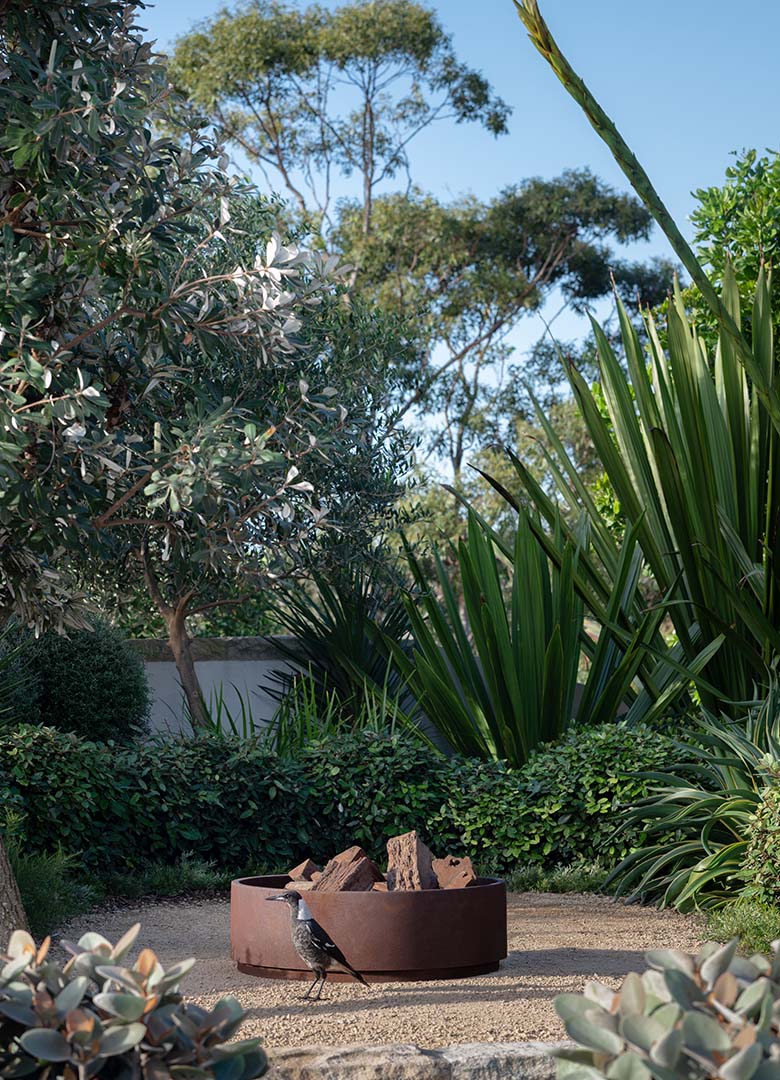
Along with its ability to be fabricated into a range of shapes and patterns, Corten can execute functions performed by more traditional materials without taking up so much space.
“It has so many applications for garden edging and retaining walls where you might not have a lot of width,” says Matt. “A traditional block wall is about 200mm thick but steel can do the same job and it’s just 5mm-10mm thick.
“It’s also good for privacy screens, wall cladding, planters and even sculpture. Working with steel in any form, it comes down to what you can draw and have fabricated, which can be done off site, so it can be time saving as well.”
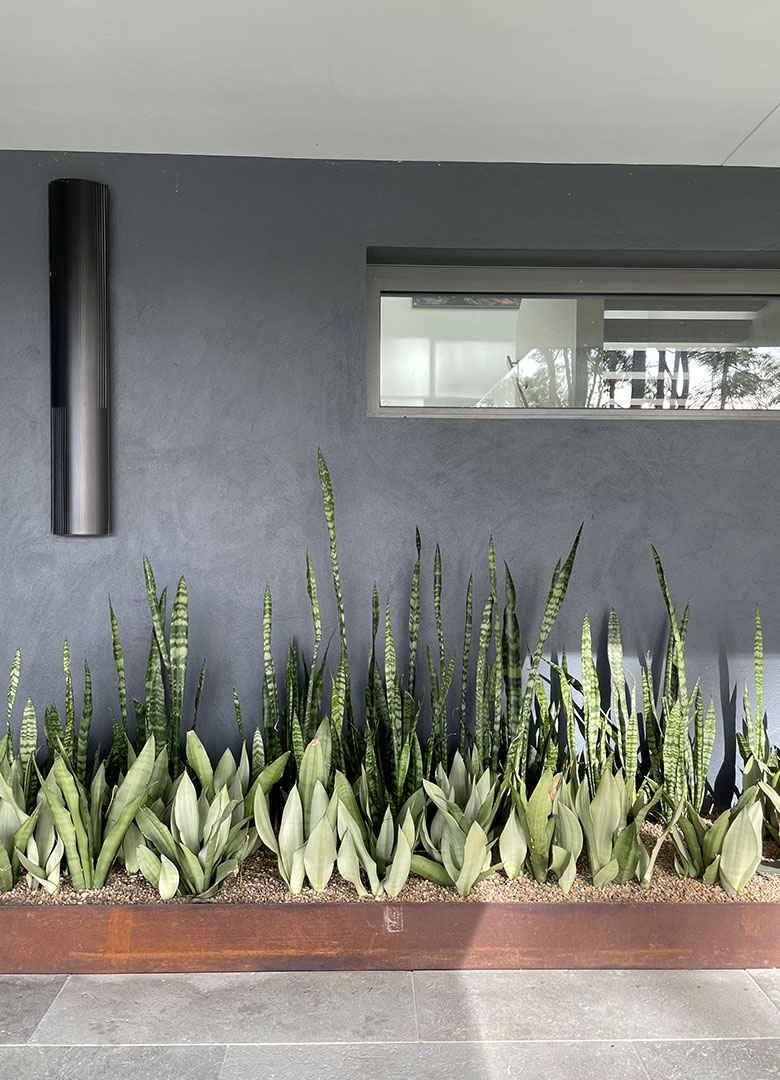
While it has been around for some time, the recent popularity of Corten over other steel products, such as powder coated steel, mild steel or steel finished in micaceous paint (aka Harbour Bridge paint) has largely come down to aesthetics. With interest growing in native and endemic plant choices, this weathering steel makes the perfect companion to natural materials such as stone, concrete and timber.
“It is beautiful to mix with those materials and they are popular finishes right now,” says Matt. “It has longevity because it looks so at home in the Australian landscape. We are developing a love for that natural colour palette and our flora – and it fits so well.”
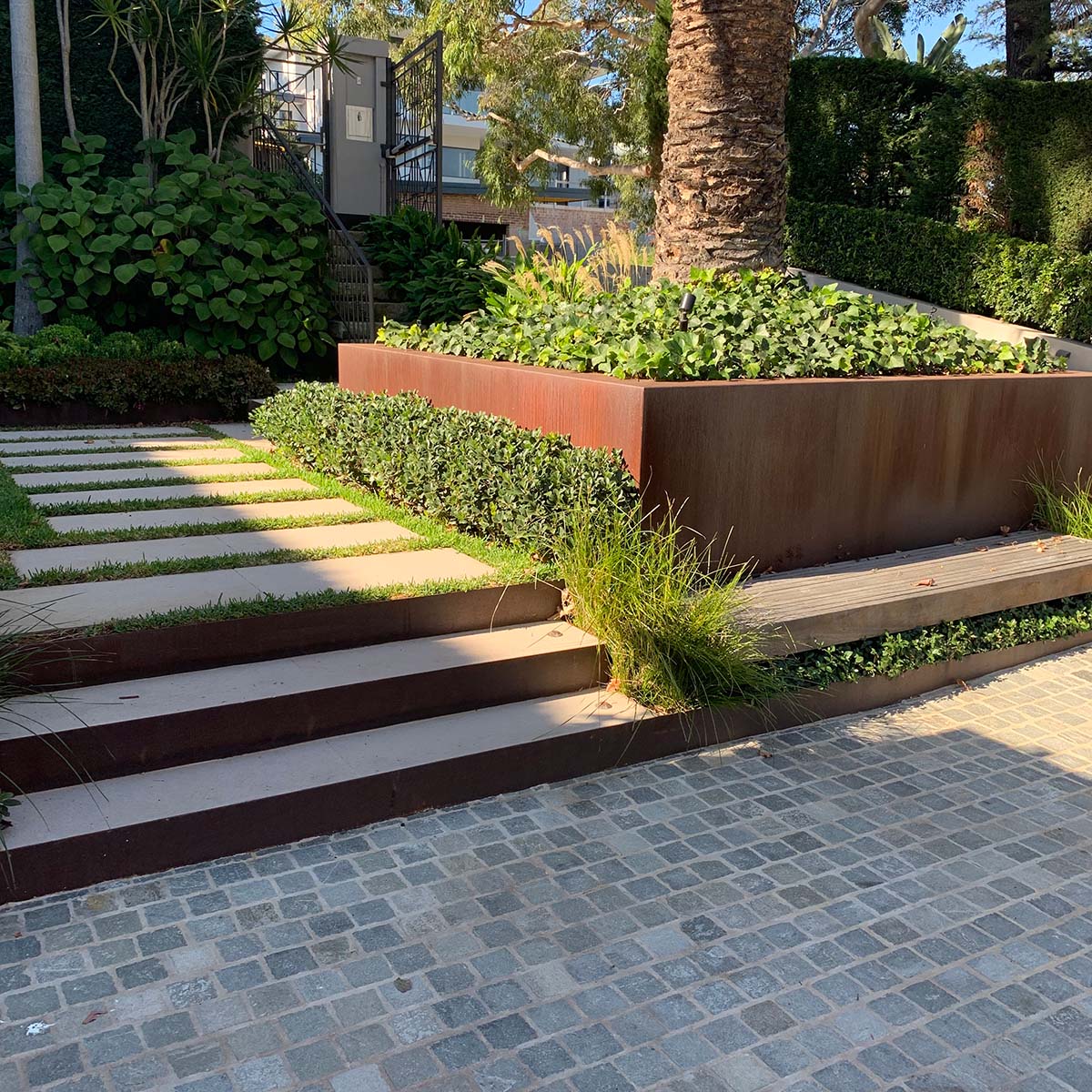
As with any material that becomes popular, Matt says it’s best to consider the context of the site before specifying Corten.
“People either love it or hate it. It’s popular now and often when that happens, you will see poor uses of it,” he says. “Sometimes people will want that look but it doesn’t translate well to their space. It is about getting that balance right where it contributes to a palette of materials and it slots right in between old and new.”
- Corten works particularly well with other materials that are also known to age well, such as stone, timber and concrete
- It is a little more expensive to other steels but Corten also lasts longer and is ideal for spaces where access for maintenance is difficult
- A shade of grey when it is installed, Corten will age to a burnt orange colour before going to a darker shade and stabilising to its characteristic weathered look
- If Corten doesn’t appeal but you love the strength of steel, ask about mild steel or finishing it in micaceous paint, which has a matte finish with a little sparkle.
